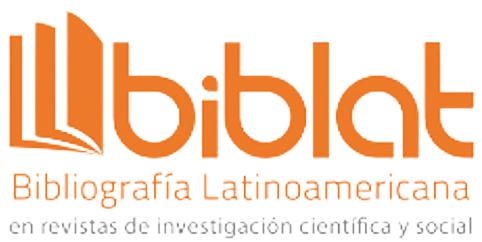Predicting the success of banking telemarketing through the use of decision trees
Abstract
Telemarketing is an interactive direct marketing technique in which a telemarketing agent solicits potential customers over the phone to make a sale of merchandise or a service. One of the great problems of telemarketing is to specify the list of clients that presents a greater probability of buying the product that is offered. In this article, we propose a personalized decision support system that can automatically predict the decision of the target audience after making a telemarketing call, in order to increase the effectiveness of direct advertising campaigns and consequently reduce the cost and cost. campaign time. The artificial intelligence method used in this work is the decision tree evaluated with the metrics of precision, accuracy and completeness. After applying the artificial intelligence method we obtain an accuracy, precision and completeness greater than 80%. The conclusions reached by the team are that in order to improve the decision tree model it is important to carry out a prior analysis of the data using statistical techniques or diagrams, to obtain a reference to the data and apply balancing techniques to obtain the best possible model.
Downloads
References
ESAN, “El Marketing y sus definiciones | Conexión ESAN,” 2016. https://www.esan.edu.pe/conexion-esan/el-marketing-y-sus-definiciones (accessed Jun. 22, 2022).
S. Chintalapati and S. K. Pandey, “Artificial intelligence in marketing: A systematic literature review,” Int. J. Mark. Res., vol. 64, no. 1, pp. 38–68, 2022, doi: 10.1177/14707853211018428. DOI: https://doi.org/10.1177/14707853211018428
Vajiramedhin, C., & Suebsing, A. (2014). Feature selection with data balancing for prediction of bank telemarketing. Applied Mathematical Sciences, 8(114), 5667-5672. DOI: https://doi.org/10.12988/ams.2014.47222
Moro, S., Cortez, P., & Rita, P. (2014). A data-driven approach to predict the success of bank telemarketing. Decision Support Systems, 62, 22-31. DOI: https://doi.org/10.1016/j.dss.2014.03.001
Asare-Frempong, J., & Jayabalan, M. (2017, September). Predicting customer response to bank direct telemarketing campaign. In 2017 International Conference on Engineering Technology and DOI: https://doi.org/10.1109/ICE2T.2017.8215961
Technopreneurship (ICE2T) (pp. 1-4). IEEE
Moro, S., Cortez, P., & Rita, P. (2018). A divide‐and‐conquer strategy using feature relevance and expert knowledge for enhancing a data mining approach to bank telemarketing. Expert Systems, 35(3), e12253. DOI: https://doi.org/10.1111/exsy.12253
Lau, Kn., Chow, H. & Liu, C. A database approach to cross selling in the banking industry: Practices, strategies and challenges. J Database Mark Cust Strategy Manag 11, 216–234 (2004). DOI: https://doi.org/10.1057/palgrave.dbm.3240222
Ghatasheh, N., Faris, H., AlTaharwa, I., Harb, Y., & Harb, A. (2020). Business analytics in telemarketing: cost-sensitive analysis of bank campaigns using artificial neural networks. Applied Sciences, 10(7), 2581. DOI: https://doi.org/10.3390/app10072581
Kim, K. H., Lee, C. S., Jo, S. M., & Cho, S. B. (2015, November). Predicting the success of bank telemarketing using deep convolutional neural network. In 2015 7th International Conference of Soft Computing and Pattern Recognition (SoCPaR) (pp. 314-317). IEEE. DOI: https://doi.org/10.1109/SOCPAR.2015.7492828
Albrecht, Tobias; Rausch, Theresa Maria; Derra, Nicholas Daniel (2021). Call me maybe: Methods and practical implementation of artificial intelligence in call center arrivalsâ forecasting. Journal of Business Research, 123(), 267–278, doi:10.1016/j.jbusres.2020.09.033 DOI: https://doi.org/10.1016/j.jbusres.2020.09.033
E. Zeinulla, K. Bekbayeva and A. Yazici, "Comparative study of the classification models for prediction of bank telemarketing," 2018 IEEE 12th International Conference on Application of Information and Communication Technologies (AICT), 2018, pp. 1-5, doi: 10.1109/ICAICT.2018.8747086. DOI: https://doi.org/10.1109/ICAICT.2018.8747086
"Google Colab". Google Research.https://research.google.com/colaboratory/intl/es/faq.html#:~:text=Colaboratory,%20o%20"Colab"%20para,an álisis%20de%20datos%20y%20educación. (accedido el 17 de agosto de 2022).
G. Stalidis, D. Karapistolis, and A. Vafeiadis, “Marketing Decision Support Using Artificial Intelligence and Knowledge Modeling: Application to Tourist Destination Management,” Procedia - Soc. Behav. Sci., vol. 175, pp. 106–113, 2015, doi: 10.1016/j.sbspro.2015.01.1180. DOI: https://doi.org/10.1016/j.sbspro.2015.01.1180
pandas - Python Data Analysis Library. (n.d.). Retrieved August 14, 2022, from https://pandas.pydata.org/
pandas · PyPI. (n.d.). Retrieved August 14, 2022, from https://pypi.org/project/pandas/
MARTÍNEZ, Guillermo Roberto Solarte; MEJÍA, José A. Soto. Árboles de decisiones en el diagnóstico de enfermedades cardiovasculares. Scientia et technica, 2011, vol. 16, no 49, p. 104-109.
GARCÍA PICHARDO, Víctor Hugo, et al. Algoritmo ID3 en la detección de ataques en aplicaciones Web.
PEDREGOSA, Fabian, et al. Scikit-learn: Machine learning in Python. the Journal of machine Learning research, 2011, vol. 12, p. 2825-2830.
Larranaga, P., Inza, I., & Moujahid, A. Tema 10: árboles de clasificación. 2020 from http://www. sc. ehu.es/ccwbayes/docencia/mmcc/docs/t10arboles. pdf.
- Conceptualization
- Data curation
- Formal Analysis
- Investigation
- Methodology
- Software
- Validation
- Writing - original draft
- Conceptualization
- Data curation
- Formal Analysis
- Investigation
- Methodology
- Software
- Validation
- Writing - original draft
- Conceptualization
- Data curation
- Formal Analysis
- Investigation
- Methodology
- Software
- Validation
- Writing - original draft
- Conceptualization
- Data curation
- Formal Analysis
- Investigation
- Methodology
- Software
- Validation
- Writing - original draft
Copyright (c) 2023 Innovación y Software

This work is licensed under a Creative Commons Attribution 4.0 International License.
The authors exclusively grant the right to publish their article to the Innovation and Software Journal, which may formally edit or modify the approved text to comply with their own editorial standards and with universal grammatical standards, prior to publication; Likewise, our journal may translate the approved manuscripts into as many languages as it deems necessary and disseminates them in several countries, always giving public recognition to the author or authors of the research.
























